Amid varied debates concerning the risks of web entry for teenagers, and controls that may be applied to guard younger customers, Google has printed a brand new report which appears to be like at how European youngsters are utilizing the most recent know-how, and the relative dangers and academic alternatives based mostly on the identical.
Google’s new “Future Report,” created in partnership with youth consultancy Livity, incorporates survey insights from greater than 7,000 teenagers aged 13-18 throughout Eire, Poland, Greece, Spain, Italy, France, and Sweden.
The full 77-page report covers off on a variety of key areas of concern, together with digital training, reliance on social media and digital platforms, rising AI use and extra.
And there’s a whole lot of useful perception, for fogeys and entrepreneurs, contained inside.
First off, the report appears to be like at how teenagers view the advantages of on-line connectivity, and what they’re doing on-line.
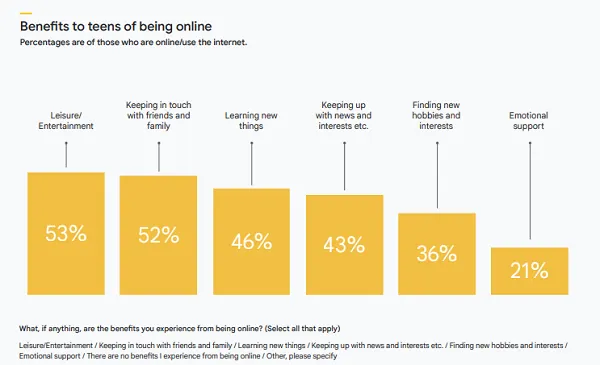
As you’ll be able to see on this chart, leisure/leisure is the first motive why teenagers use the web, whereas maintaining with associates and studying about their pursuits are available shut behind.
Which isn’t any actual shock, although it’s worthy of observe how precisely teenagers are discovering new issues on the internet:
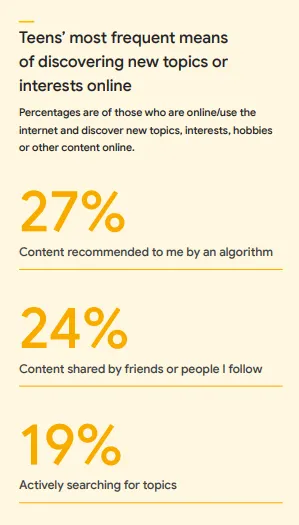
Algorithmic amplification performs a key position in exhibiting customers issues that they is likely to be focused on, which underlines the ability that social platforms have in guiding teen pondering, and swaying pursuits based mostly on algorithmic weighting.
Which will or will not be an enormous concern, relying on who’s accountable for these algorithms, and the way a lot belief you’re prepared to place in them. However it’s an fascinating consideration. China, for instance, implements extra stringent controls over algorithmic amplification in native social media apps aimed toward teenagers in an effort to keep away from anti-social or dangerous tendencies gaining traction.
The perception right here would counsel that this might have a major influence on broader behaviors.
The report additionally appears to be like on the position that video content material, particularly, performs in trendy teen life:
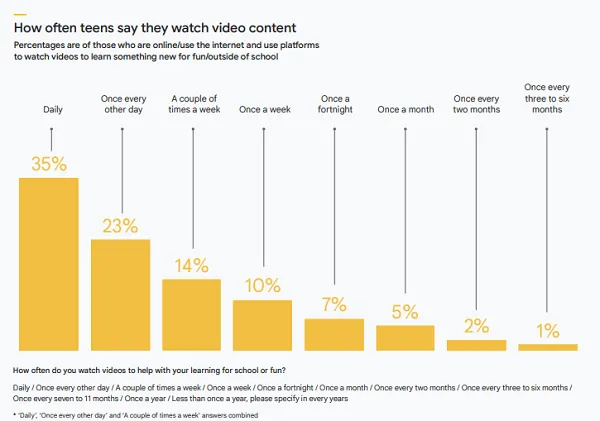
Secure to say that video can be a major affect on EU teen tradition, with YouTube being a key driver of broader teen engagement and tendencies.
The report additionally appears to be like on the adoption of AI, and the way teenagers view the most recent AI instruments.
And youths are most positively adopting AI chatbots and apps:
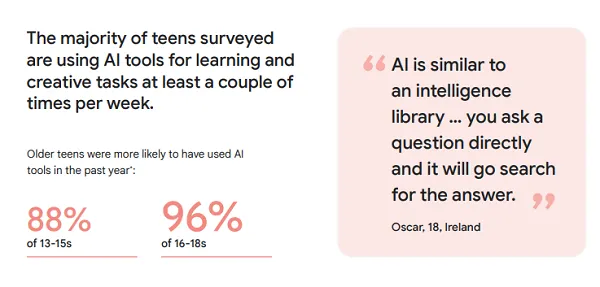
Most teenagers at the moment are conscious of AI instruments, and are incorporating them into their each day actions, with the commonest utilization of AI being to do faculty work:
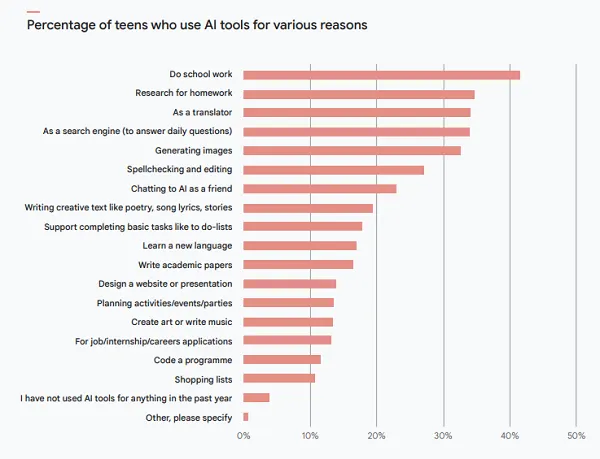
Many teenagers additionally say that AI instruments assist them enhance their creativity, and it’s fascinating to think about the broader influence of this shift, and the way teenagers rising up to any extent further gained’t know a world the place AI help instruments by no means existed.
That’s going to vary the paradigm for training extra broadly, and put extra emphasis on the usage of AI instruments for coaching, in increasingly contexts. Which raises questions on reliability, and inside this, teenagers are additionally studying how you can confirm data offered to them on-line and in AI instruments.
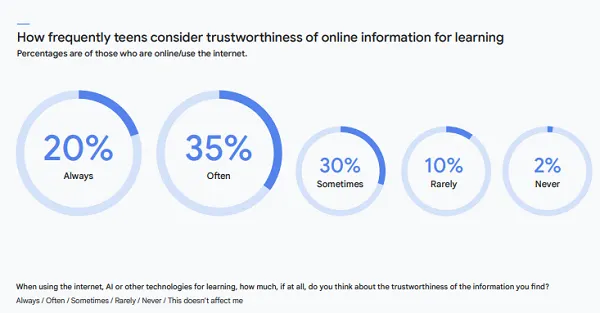
Digital literacy is changing into an excellent greater consideration on this respect, as a result of AI instruments, usually, solely summarize what’s already obtainable on the internet, and with out some degree of essential evaluation, that may usually result in incorrect and/or deceptive outcomes.
The best way to resolve that is to make sure that you don’t depend on AI solutions in isolation, and that you just use them as a information, which is a vital lesson that every one net customers have to think about.
Which is one other ingredient of the report:
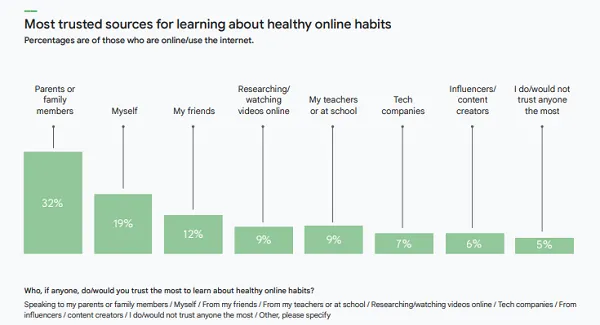
It is a key level, youngsters are turning to folks to assist information them on reliable data, and as such, mother and father additionally want to make sure that they’ll reply these questions.
Which many doubtless can’t, and it’s value additionally noting that older teenagers cease counting on mother and father as a lot on this respect.
“At ages 13-15, greater than half of teenagers (54%) flip to trusted mother and father or guardians to be taught wholesome on-line habits. However at ages 16-18, that quantity drops to lower than one in 5 (19%), suggesting that the most effective time for younger folks to be taught good on-line hygiene is after they’re nonetheless extra open to conversations with the adults of their lives.”
So for one, youngsters want extra digital literacy training at a younger age, from trusted, knowledgeable sources. But in addition, mother and father have to be cautious that older teenagers are going to tune them out, and at a vital time for potential publicity and hurt, they’re now not on the lookout for this recommendation, from them a minimum of.
In a time of fast technological change, that is one other ingredient of concern.
So what are the important thing outcomes based mostly on all of this?
Nicely, the primary lesson is that governments have to put extra concentrate on digital literacy training, from the impacts of algorithms, to the issues of AI-generated solutions, to enough security habits inside on-line interactions.
Many areas are additionally trying to enhance the age of social media entry, in an effort to restrict potential harms, however the perception right here reveals that AI and video entry (through YouTube) is simply as vital a priority, whereas the social advantages of on-line connection may be considerably impacted by any such enhance.
Training, significantly amongst youthful teenagers, is the important thing step. And whereas a degree of safety by enhanced age checking may also assist, the long run is already right here by way of how children are utilizing digital instruments to be taught concerning the world.
Governments must also be pushing to know extra about algorithmic amplification amongst teenagers, and what safeguards will be applied at this degree, whereas colleges must also be investing in digital training for fogeys to raised attain younger customers.
You may take a look at the total EU “Future Report” right here.



